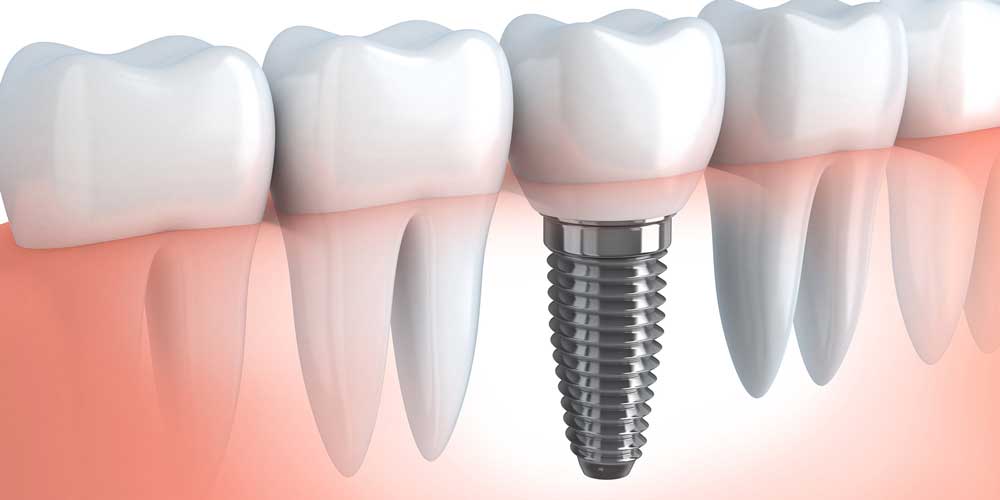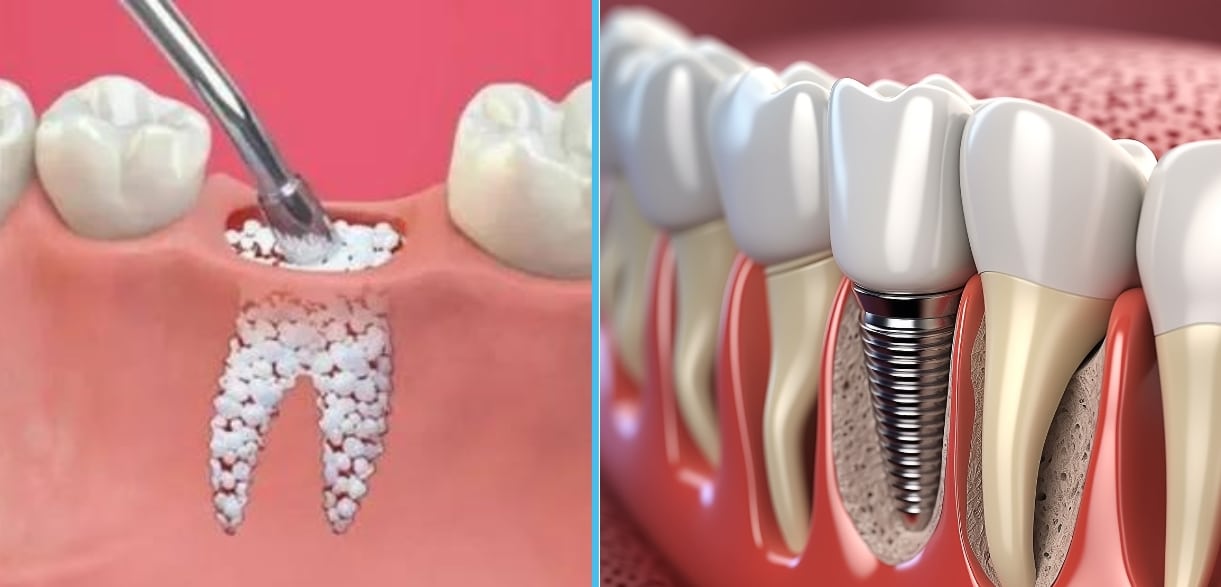For residents of Jensen Beach, Stuart, and surrounding St. Lucie County communities, understanding the profound connection between dental implants and jawbone health is crucial when considering tooth replacement options. What many people don't realize is that dental implants do more than just restore your smile—they play a vital role in maintaining the structural integrity of your jaw and preventing bone deterioration.
At St. Lucie Center of Cosmetic Dentistry, Dr. Hans Almanzar specializes in advanced implant solutions that not only replace missing teeth but actively contribute to long-term bone health and facial aesthetics.
This comprehensive guide examines the critical relationship between dental implants and jawbone preservation, helping residents of Jensen Beach and Stuart make informed decisions about their oral health.
In This Article:
- The Basics of Jawbone Loss After Tooth Extraction
- How Dental Implants Prevent Bone Loss
- Consequences of Untreated Bone Loss for Jensen Beach Residents
- Implant Options for Stuart Residents with Existing Bone Loss
- Bone Grafting Procedures to Support Implant Placement
- Why Timing Matters: The Importance of Early Intervention
- Success Stories: Jensen Beach and Stuart Patients
- Advanced Techniques for Comprehensive Bone Preservation
- Frequently Asked Questions About Implants and Bone Health
The Basics of Jawbone Loss After Tooth Extraction
Understanding the Natural Process of Bone Resorption
The jawbone is a dynamic tissue that requires constant stimulation to maintain its density and volume. This stimulation naturally comes from tooth roots, which transfer bite forces into the bone during chewing and speaking. When a tooth is lost or extracted, this vital stimulation disappears, triggering a process called bone resorption.
According to a study published in the International Journal of Oral & Maxillofacial Implants, the alveolar ridge (the part of the jawbone that holds teeth) can lose up to 25% of its width within the first year after tooth extraction and continue to deteriorate over time if not addressed.

Progressive jawbone deterioration following tooth loss
Key Research Findings on Bone Loss
- The Mayo Clinic reports that significant bone loss can occur within the first 6 months after tooth extraction
- Horizontal bone width decreases by 29-63% and vertical bone height decreases by 11-22% during the first 6 months following tooth extraction
- Bone loss progresses at a rate of approximately 0.5-1% per year thereafter
- Posterior regions of the jaw (particularly the upper jaw) typically lose bone faster than anterior regions
- Multiple adjacent missing teeth accelerate the rate of bone loss
This bone deterioration is particularly concerning for Jensen Beach and Stuart residents because our St. Lucie County community has a significant senior population who may have already experienced some degree of natural bone density reduction due to aging.
The progressive nature of bone loss following tooth extraction creates both aesthetic and functional challenges. As the jawbone shrinks, facial proportions change, often leading to a prematurely aged appearance characterized by sunken cheeks, wrinkles around the mouth, and a shortened distance between the nose and chin.
How Dental Implants Prevent Bone Loss
The Biological Process of Osseointegration
Dental implants are the only tooth replacement option that actively preserves jawbone health. Unlike dentures or traditional bridges, which sit on top of the gums, dental implants replace the entire tooth structure from root to crown.
The foundation of an implant's bone-preserving capability lies in the process of osseointegration. This remarkable biological phenomenon, first discovered by Swedish researcher Per-Ingvar Brånemark, occurs when titanium implants form a direct structural and functional connection with living bone tissue.
According to the American Dental Association (ADA), this integration creates a stable anchor that transfers chewing forces to the surrounding bone, providing the stimulation necessary to maintain bone density and prevent resorption.
Research published in the Journal of the American Dental Association confirms that properly placed dental implants can effectively preserve up to 75% more bone volume compared to areas where teeth were extracted and not replaced with implants.
Osseointegration: how implants fuse with living bone
Key Bone Health Benefits of Dental Implants
- Stimulation of Bone Tissue – Implants transfer chewing forces to the jawbone, providing needed mechanical stimulation
- Prevention of Adjacent Tooth Movement – By maintaining space, implants prevent shifting of remaining teeth that can lead to further bone deterioration
- Preservation of Facial Structure – Maintaining bone volume helps preserve natural facial contours and prevents premature aging
- Improved Chewing Efficiency – Stable implants allow for normal chewing function, which further stimulates the jawbone
- Long-Term Stability – The continued bone stimulation creates a self-sustaining cycle of bone preservation
"Dental implants are the only tooth replacement option that actually stimulates and preserves bone. Other solutions like dentures may actually accelerate bone loss by placing pressure on the bone surface. This is why implants are considered the gold standard for replacing missing teeth, especially when bone preservation is a priority."
- Dr. Hans Almanzar, St. Lucie Center of Cosmetic Dentistry
Consequences of Untreated Bone Loss for Jensen Beach Residents
Beyond Aesthetics: Functional and Health Implications
For our Jensen Beach patients, understanding the full spectrum of consequences associated with untreated jawbone loss is essential for making informed decisions about tooth replacement options.
Aesthetic Consequences
- Facial Collapse – Sunken appearance in the cheek and lip areas
- Premature Wrinkles – Formation of lines around the mouth
- Decreased Facial Height – Shortened distance between nose and chin
- Thin Lips – Loss of support for the lips, making them appear thinner
- Aged Appearance – Overall older appearance regardless of actual age
Functional Consequences
- Compromised Nutrition – Difficulty chewing nutritious foods like fruits and vegetables
- Speech Problems – Changes in pronunciation and clarity of speech
- TMJ Disorders – Jaw joint issues due to altered bite mechanics
- Headaches – Increased frequency due to irregular bite patterns
- Further Tooth Loss – Increased risk to remaining natural teeth
The National Institutes of Health (NIH) has documented a clear connection between oral health status and overall quality of life. For Jensen Beach seniors particularly, the cumulative effects of jawbone loss can significantly impact daily activities and social interactions.
A concerning finding from the Academy of General Dentistry shows that individuals with significant tooth and bone loss often experience nutritional deficiencies due to dietary restrictions. This can lead to broader health issues, including decreased immune function and heightened risk for chronic diseases.
Warning Signs of Progressive Bone Loss
Jensen Beach residents should be aware of these warning signs that may indicate significant jawbone deterioration:
- Dentures that no longer fit properly or feel loose
- Increasing difficulty speaking clearly
- Noticeable changes in facial appearance
- Pain or soreness when wearing dentures
- Gum tissue irritation or recurring sores
- Progressive shifting of remaining natural teeth
If you're experiencing any of these symptoms, we recommend scheduling a consultation at St. Lucie Center of Cosmetic Dentistry to explore implant options before further bone loss occurs.
Implant Options for Stuart Residents with Existing Bone Loss
Specialized Solutions for Compromised Bone
For our Stuart patients who have already experienced significant bone loss, there are still excellent implant options available. Modern implant dentistry offers several specialized approaches that can provide successful outcomes even in cases of substantial bone deterioration.
I was told by two other dentists that I didn't have enough bone for implants and would need to settle for dentures. Dr. Almanzar at St. Lucie Center of Cosmetic Dentistry took a completely different approach. He recommended the All-on-4 technique, which allowed me to get fixed teeth without extensive bone grafting. The entire process was much more comfortable than I expected, and I can now eat all my favorite foods again. I'm so grateful I found a dentist who offered advanced solutions instead of just the standard options.
- Margaret S., Stuart
For Stuart residents considering implants but concerned about bone loss, the initial consultation at St. Lucie Center of Cosmetic Dentistry includes comprehensive 3D imaging to accurately assess your current bone volume and determine the most appropriate implant solution for your specific situation.
Bone Grafting Procedures to Support Implant Placement
Rebuilding the Foundation for Dental Implants
For many Jensen Beach and Stuart residents with moderate to severe bone loss, bone grafting procedures provide an effective way to rebuild adequate jawbone volume for successful implant placement. These procedures essentially create a stronger foundation for dental implants by adding bone material to deficient areas.
According to the American Association of Oral and Maxillofacial Surgeons, various bone grafting techniques have shown excellent success rates, allowing many patients who were previously not candidates for dental implants to benefit from this optimal tooth replacement solution.

Bone grafting creates a solid foundation for implant placement
Common Bone Grafting Options
- Autogenous Grafts – Using bone harvested from another location in your own body, typically from the chin, ramus (back of lower jaw), or hip
- Allograft Materials – Processed bone from human donors, carefully screened and processed according to FDA guidelines
- Xenograft Materials – Specially processed bone from bovine (cow) sources, with all organic materials removed
- Synthetic Materials – Lab-created bone substitutes that provide scaffolding for new bone growth
- Growth Factors – Specialized proteins like PRF (Platelet Rich Fibrin) derived from your own blood that accelerate healing and bone formation
Specialized Grafting Procedures
Socket Preservation
This procedure is performed immediately after tooth extraction to prevent the significant bone loss that typically occurs within the first few months. According to the Journal of Pharmacy & Bioallied Sciences, socket preservation can maintain up to 85% more bone volume compared to extractions without grafting.
Sinus Lift Procedure
For the upper posterior jaw, where the maxillary sinus limits available bone height, this specialized technique adds bone volume by carefully lifting the sinus membrane. A study in International Journal of Oral and Maxillofacial Surgery shows success rates over 95% for implants placed following sinus lift procedures.
Ridge Augmentation
When the alveolar ridge has significant horizontal bone loss, this technique rebuilds width to accommodate standard implants. Research published in The Journal of Prosthetic Dentistry demonstrates that augmented sites maintain stability for decades when properly performed.
Distraction Osteogenesis
For severe vertical deficiencies, this advanced technique gradually separates bone segments to stimulate new bone formation in between. While more complex, it creates natural, high-quality bone as documented in the Journal of Oral and Maxillofacial Surgery.
"Many patients are concerned about bone grafting procedures, but modern techniques have made these procedures much more comfortable and predictable than in the past. At St. Lucie Center of Cosmetic Dentistry, we often use minimally invasive approaches and advanced biomaterials that significantly reduce recovery time while maximizing bone regeneration potential. This allows us to help even patients with significant bone loss achieve successful implant outcomes."
Why Timing Matters: The Importance of Early Intervention
The Progressive Nature of Bone Loss
For residents of Jensen Beach and Stuart considering dental implants, understanding the time-sensitive nature of bone preservation is crucial. The progressive and irreversible nature of bone loss means that early intervention provides significant advantages.
Timeline of Bone Loss After Tooth Extraction
1-3 Months
25% reduction in ridge width
6 Months
Up to 50% reduction in ridge width
12 Months
Up to 4.5mm vertical height loss
2+ Years
Continued loss at 0.5-1% annually




